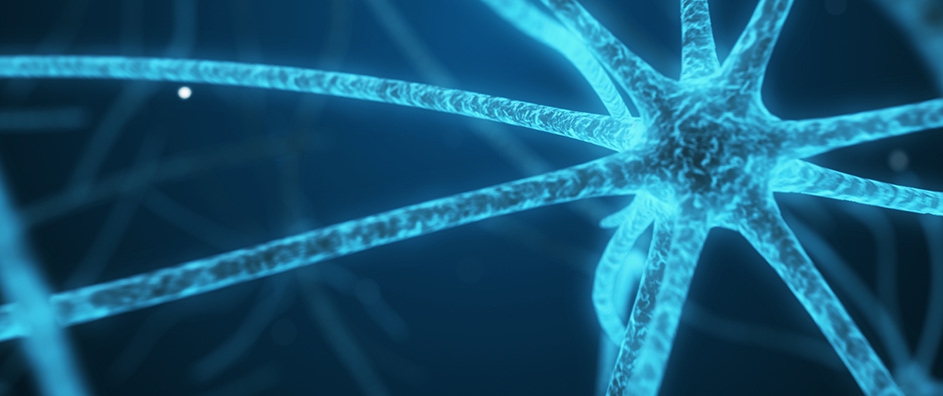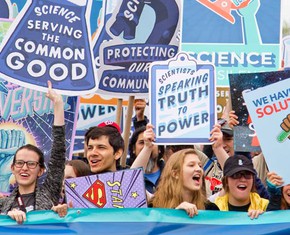The views expressed in our content reflect individual perspectives and do not represent the authoritative views of the Baha'i Faith.
Every single manifestation of the myriad forms of creation is a reflection of the divine emanations, therefore the divine emanations are infinite, unlimited and illimitable. – Abdu’l-Baha, Divine Philosophy, pp. 168-169.
What’s a “divine emanation?”
Well, Webster’s Dictionary defines an emanation as “something that flows out, issues or proceeds.” That would make a divine emanation something that flows out from the Creator—like the macrocosmic creation of two trillion galaxies, or like the microcosm of trillions of microbes that live within us.
Each human body totes around several trillion cells, as the astrophysicist and science writer Caleb Scharf has pointed out. Even more impressive, we also carry around somewhere between ten and a hundred trillion microbial and bacterial cells called the microbiome—which none of us could live without:
We don’t understand our own biology: It’s not too radical to say this, after all, if we did understand every detail of how we worked we’d presumably be able to eliminate disease (assuming that’s actually better for us, which it clearly is individually, but perhaps not as a species). We’d also be able to customize ourselves by reaching into to those 3 billion or so nucleic acids in our DNA and doing a spot of molecular engineering… But we’re not close to doing this any better than we can come up with ’engineered’ crops—lots of misses and a few hits. Want a good example of our pitiful lack of knowledge? It’s the microbiome. Our ten trillion human cells are augmented, exploited, nurtured, by a hundred trillion microbial cells – a couple of pounds of bacteria and archaea that we all carry around and can’t live without. They’re in our guts, our lungs, up our noses and in every other dank corner. We’re just cruise ships for the ultimate microbial Club-Med, and we simply don’t know what that all means. – This Is What We Don’t Know about the Universe, Scientific American, May 12, 2014.
Your microbiome, you may be surprised to learn, is the harmonious, symbiotic community of microorganisms you share your body space with, which physicians sometimes call flora. Living inside your gut and many other organs, bodily fluids and tissues, these tiny organisms have colonized you. But don’t freak out—your microbiota have a largely peaceful coexistence (called a commensal relationship) and even a mutualistic connection with your physical self. They help you, and you help them. More and more, scientists have learned that the human microbiome helps determine our health, our energy levels, our weight, our resistance to disease, and may even contribute to our mental sense of well-being.
But the microbiome largely remains a mystery. We only know a few sketchy details of how it interacts with our bodies to promote health or cause illness; and we have no idea why the microbiomes of normal, healthy humans are so different from one person to the next.

These tiny microbiome-based worlds within each of our bodies have a strong resemblance to the outer environment in the physical world, where a whole host of living things commensally depends on each other for their continuing existence. On a world scale, we call that kind of living interaction and mutual interdependency an ecosystem. Lately we’re learning that each human being has their own unique individual ecosystem, an inner microbiome balance that allows our bodies to flourish by welding themselves into a composite unity:
Man is the microcosm; and the infinite universe, the macrocosm. The mysteries of the greater world, or macrocosm, are expressed or revealed in the lesser world, the microcosm. The tree, so to speak, is the greater world, and the seed in its relation to the tree is the lesser world. But the whole of the great tree is potentially latent and hidden in the little seed. When this seed is planted and cultivated, the tree is revealed. Likewise, the greater world, the macrocosm, is latent and miniatured in the lesser world, or microcosm, of man. – Abdu’l-Baha, The Promulgation of Universal Peace, pp. 69-70.
Reflect upon the inner realities of the universe, the secret wisdoms involved, the enigmas, the inter-relationships, the rules that govern all. For every part of the universe is connected with every other part by ties that are very powerful and admit of no imbalance, nor any slackening whatever… Physical bodies are transferred past one barrier after another, from one life to another, and all things are subject to transformation and change, save only the essence of existence itself — since it is constant and immutable, and upon it is founded the life of every species and kind, of every contingent reality throughout the whole of creation. – Abdu’l-Baha, Selections from the Writings of Abdu’l-Baha, p. 156.
In one way, then, each person represents the microcosm; and all people represent the macrocosm, just as the Earth represents a microcosm of the universe, and an atom represents a microcosm of the sun. Baha’is believe that this replication of structure—from the smallest particle to the universe itself—answers our questions about the Creator and the creation:
…nature is subject to a sound organization, to inviolable laws, to a perfect order, and to a consummate design, from which it never departs. To such an extent is this true that were you to gaze with the eye of insight and discernment, you would observe that all things—from the smallest invisible atom to the largest globes in the world of existence, such as the sun or other great stars and luminous bodies—are the most perfectly organized, be it with regard to their order, their composition, their outward form, or their motion, and that all are subject to one universal law from which they never depart. – Abdu’l-Baha, Some Answered Questions, newly revised edition, p. 3.
Universal existences can be likened and compared to particular ones, for both are subject to one natural order, one universal law, and one divine arrangement. For instance, you will find the smallest atoms to be similar in their genetic structure to the greatest entities in the universe, and it is clear that they have proceeded from one laboratory of might according to one natural order and one universal law, and can therefore be compared to one another. – Ibid., pp. 209-210.
















Comments
Sign in or create an account
Continue with Googleor